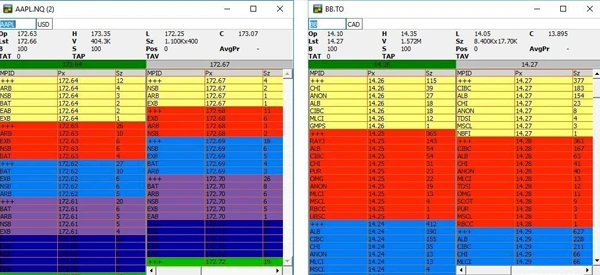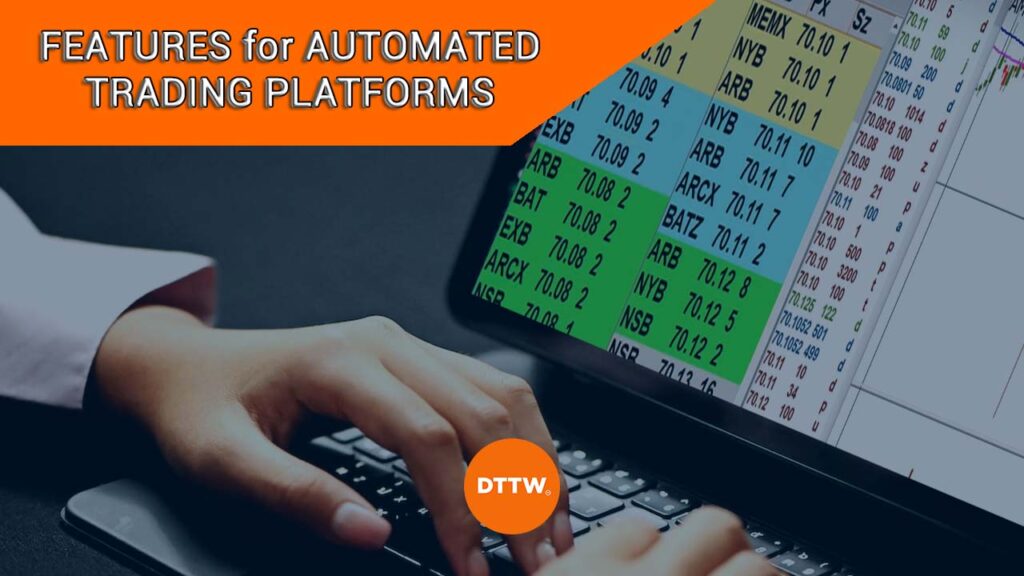Automated trading has emerged as a winning phenomenon in the world of trading. It puts your trading practices on autopilot, taking manual errors out of the equation.
More and more traders — seasoned and novice — are taking to automated trading as it tremendously improves the efficiency of your trades.
However, with a plethora of automated trading platforms in the market, it becomes especially important to pick the one that is most suited to your style of trading.
In this article, we take a look at the features a trader should look for when selecting the right trading platform for automated trading.
Table of Contents
Automated Trading Platforms: must have features
Automatic trading is the process of participating in a financial market by using algorithm programs and software solutions to execute your trades. Instead of operating your trade yourself, you put programs in charge that operate on a set of predefined rules.
Also called algorithmic trading, this method of investment in financial markets has seen a significant rise in recent years. Around 92% of the trading conducted in the forex market in 2019 was found to be from algorithmic trading instead of human beings.
With automatic trading emerging as such a favored practice in the market, traders need to be vigilant about the platforms they choose to execute their strategies with. There are some key features you need to be looking for in a trading platform before you venture forth with it.
We’ve identified the most important features the right automated trading platforms must have to help you achieve success as a trader. Take a look at them below.
1. Backtesting
Source: Composer Trader
Automated trading works on a set of predefined rules that determine when you should enter or exit an order as well as how much money you should invest in each of them. Trading strategies vary depending on the market trends, your budget, and the approach you want to execute.
The best trading platforms such as Day Trade The World put all the aforementioned elements in perspective and formulate the best strategies for you. Backtesting is one such feature that highlights the efficiency of the automated trading platform you choose.
It’s the process of using historical market data to determine strategies in the present or near future. This involves programmers running algorithm programs on market data that has been collected in the past to determine a profitable strategy that produces expected results for the traders.
Your automated trading platform should provide backtesting strategies as they help you test your trading solutions and obtain optimized results. Though the results are not always accurate, backtesting gives you a fair idea about the profitability of your plans.
2. Forward testing
Forward testing is another feature provided by automated platforms that boosts your trading. Unlike backtesting which relies on historical data to formulate the strategies of the future, forward testing uses real-time market data to check the effectiveness of your current trading strategy.
As a trader, you need to look for trading platforms that provide the tools and means for you to conduct forward testing as a strategy. It uses simulated trading and real-time market data to help you make moves then and there.
Forward testing can also be used to identify and reveal issues in the computer code you are using as a base for your strategies. Your trading platform needs to be flexible, agile, and sturdy to be able to conduct high-intensity calculations for longer durations of forward testing.
Also known as paper trading, forward testing does not rely on historical data but rather out of sample data that is collected live. It is called paper trading as the traits are conducted and executed on paper and not in reality.
3. Live testing

Live testing is a combined and modified approach, often touted as the final stage of the development cycle of a trader’s strategies. As the name suggests, live testing occurs during the live performance of a strategy, or when the strategy is in motion.
Here, the performance of the strategy in real-time is compared to the backtested results as well as forward testing results. This means that the results predicted by the historical data in the backtesting strategy as well as the results of the effectiveness of the trading system predicted by the forward testing strategy are compared in the live performance.
Related » How to Optimize Your Trading Strategy
The following metrics are evaluated for the purpose of live testing of strategies:
- Profit factor
- The average gain achieved per trade
- Maximum drawdown
- Profit percentage
The overall goal of an automated trading platform is to meet the expected results derived from backtesting as well as the efficiency rating derived from forward testing. Your platform of choice should be able to provide you with tools to carry out live testing during real-time trading sessions.
Live testing is the test of the trading platform to be able to produce high-quality tools as well as provide top-notch service to the traders that enables them to carry out their trades with ease.
4. Multi-asset trading
The algorithmic trading market is growing at a staggering rate of 12.7%. It is expected to reach a $31,494 million market size by 2028 if it continues at the given rate. Trading platforms’ versatility has been a leading contributor to the exponential growth of the trading market.
Traders don’t just deal in traditional securities such as stocks, ETFs, and CFDs. They are now dealing in more financial assets than they have ever before with the introduction of cryptocurrencies and numerous digital assets.
This is why it is crucial for you as a trader to pick a trading platform that allows multi-asset trading.
Related » What you should Consider when Choosing the Best Assets to Trade
Whether you are a new trader or a seasoned one, you need to have the option available to you to trade in a variety of assets.
Whether you deal in them or not is entirely up to you. But your automated trading platform should be one that gives you the option to trade in multiple assets at the same time. You get to expand your portfolio without having to deal with multiple platforms.
5. Low fees/commission
Trading platforms mostly charge fees and commissions to allow you to trade on their platform. There are different kinds of charges associated with the actions you take and the trades you make, such as trading piece competitors please, conversion fees, and withdrawal fees.
Paying some sort of fee for your trades is inevitable. However, trading platforms are notorious for charging hidden fees while advertising otherwise. So, you need to pick an automated trading platform that is honest and transparent about the fees it charges.
Look for platforms that charge low fees, especially for new traders. See that the platform does not take advantage of new traders by charging them more or hidden fees. Many platforms advertise 0% commission and no fees in hidden charges.
The platform should transfer the rights of the underlying asset to you post your purchase instead of keeping it to itself. The fees can also vary from country to country and depending on your status as a new or longtime user.
6. Customer service
Customer service is a crucial factor in choosing any service. Your automated trading platform needs to provide consistent assistance to you in the form of chats, calls, emails, support tickets, and help centers.
Traders need different kinds of support during different cycles of their journeys. New traders will need learning centers to gain more knowledge about the market and pick up strategies. They will also need more hands-on support during the execution of real-time trades.
Experienced trades may need less support from the platform but they will be sure to appreciate a quick response if they run into an issue during a trade or raise a support ticket. The trading platform should provide quality customer service to help traders excel in automated trading.
Even Real Trading has a dedicated service to assist its partners in building and developing their own trading office, the TFD (trading floor development) team.
7. Security
Cyber security has emerged as a pressing concern in today’s time. Frauds in the market, especially in the unregulated circuit of cryptocurrency can discourage traders from trusting the digitized process of automated trading.
When picking a platform for trading, make sure that it provides a secure regulated platform for all kinds of trading and has a reliable track record of storing investor funds.
A good platform would store investor funds in cold storage to diminish the chances of losing the funds to fraudulent hacks or technical errors.
Related » How to Avoid Day Trading Scams
Choose a secure and feature-rich platform for superior automated trading
Automated trading has transformed the weight trades operated in the market. It has taken everything from traditional securities to newer cryptocurrencies into account to help traders ace the modern market with premade strategies.
Choosing the right automated trading platform can boost your trading practices by providing the needed support in the form of tools and features. Choose a platform that is fast, secure, and rich in features to help you optimize your trading experience and find success in the market.
Let us know in the comments what features you think an automated trading platform must have.



